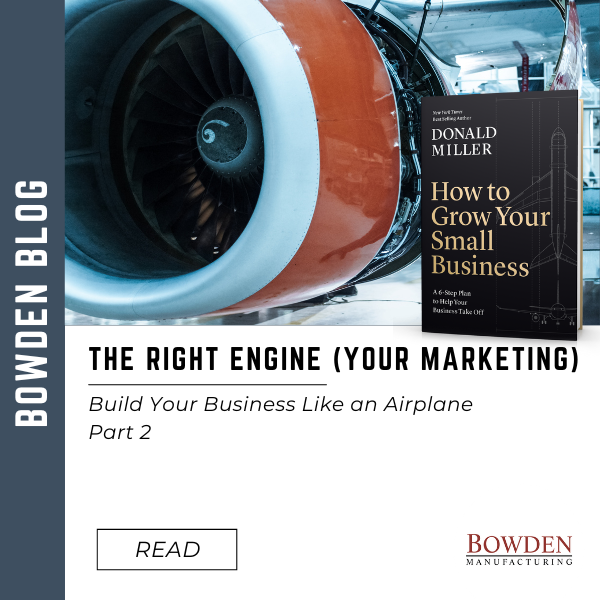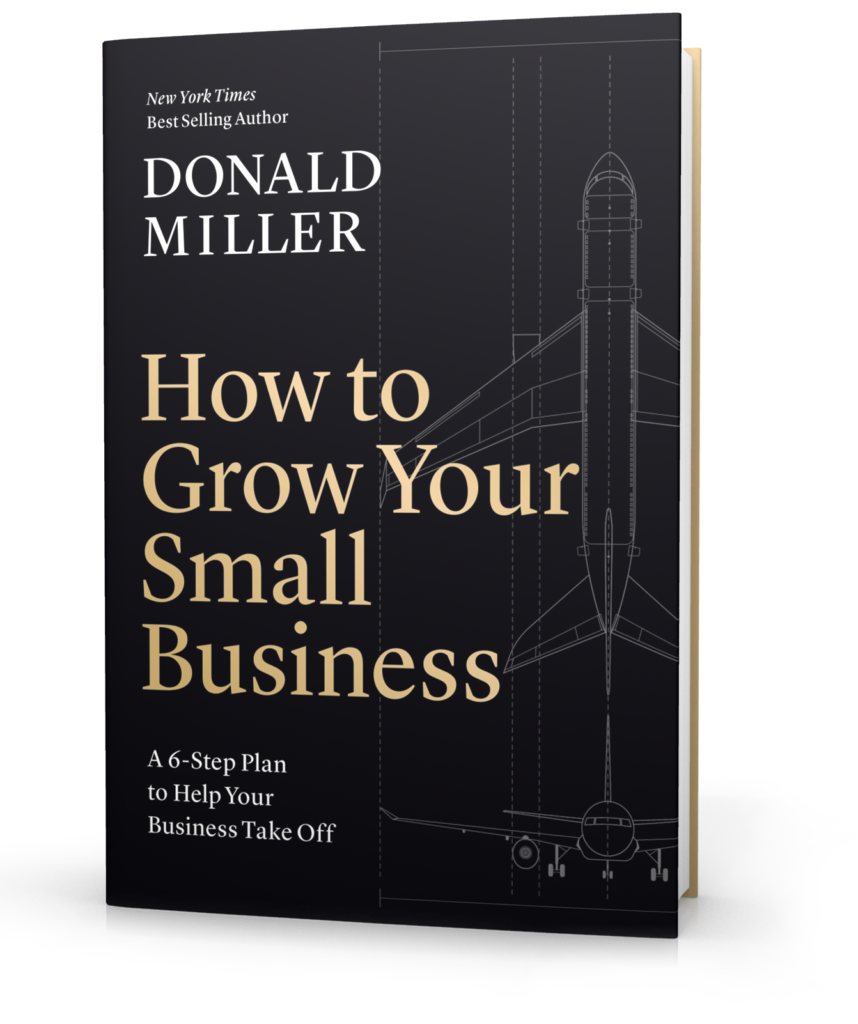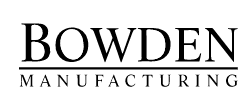Introduction
Do you understand how to use the power of story to market your business?
In this Series, we’re reviewing the 6-Step Plan to run your business from Donald Miller’s latest book, How to Grow Your Small Business, and the online platform at businessmadesimple.com. The analogy of an airplane helps describe the 6 Steps and this week, we’re continuing with Step 2, the Right Engine, your Marketing.
Marketing a small business can be a powerful way to drive growth! In this blog, we’ll review the principles for the Right Engine (Your Marketing) in detail so you can employ the StoryBrand Messaging framework and utilize the Marketing Made Simple Sales Funnel to provide clarity to your prospective Customers so they clearly understand the problem you solve for them. We’ll discuss the way you can use the power of story to provide the Marketing “thrust” for your small business airplane so it can take flight
Step 2 – The Right Engine (Your Marketing) – 2 Frameworks & 1 Tool to Create Thrust to Drive Your Business Airplane
The StoryBrand Messaging Framework
Most companies waste a lot of time and money on Marketing. That’s often because the desire to create beautiful websites and emails override the importance of being extremely clear and concise with the message. Typical Marketing also rarely uses the power of story to engage a prospective Customer in a meaningful way.
In general, stories follow the simplified path shown below, encompassed in a 7-part framework:
- A Hero1 is introduced, and they have a Problem2.
- They meet a Guide3, who can help them solve the problem.
- The Guide provides a Plan4 and the Hero answers the Guide’s Call to Action5.
- With the help of the Guide, the Hero achieves Success6 by solving the problem to win the day and avoids Failure.7 Over the course of those 7 elements of the story, the Hero undergoes a Character Transformation from their start as an uncertain character into their heroic aspirational identity through growing to meet the challenge, solve the problem, and achieve their goal.
Stories have four main characters: Hero, Victim, Villain, and Guide. The Hero is who the story is about. The Victim is there to be rescued. The Villain keeps the Victim down and makes the Hero look good. And the Guide is there to help the Hero defeat the Villain, save the Victim, and win the day.
Before applying basic story structure using the StoryBrand Messaging Framework, most marketing positioned the company as the Hero of the story. The company website is all about the heroic story of the company, its history, and its position in the marketplace. While the website pages might have good information about the company and its products, by positioning the company as the Hero, the website doesn’t engage a new viewer.
The big paradigm shift using the StoryBrand Messaging Framework is that the company should position itself as the Guide, not the Hero. The Customer should be the Hero! When you position the Customer as the Hero and your company as the Guide, you are positioning yourself to help the Customer achieve success. To achieve that success, your Customer uses your help to overcome their problem. The problem is the hook that engages prospective Customers in the story. If they can identify with the problem you describe, they will want to learn more about how you can help them get that problem solved.
As a Guide, you earn the Customer’s trust by demonstrating both empathy and authority. Empathy lets them know you understand what they’re going through with a particular problem. Authority demonstrates that you can help them overcome the problem to achieve the success they desire. In your role as the Guide, you provide them with a 3-step plan to follow and then you call them to action. If they take the appropriate action you’ve set up for them, they will achieve the success they seek. If they fail to act, merely staying on their previous path, they will fail to solve the problem and their journey will not have the happy ending they were seeking.
Positioning yourself and your company as the Guide using the StoryBrand Messaging Framework sets you up to help your prospective Customer transform from their former position, namely dealing with their problem and being uncertain how to solve it, into a new, better version of themselves that has grown to be able to overcome the problem. When you can clearly identify the desired Aspirational Identity of your prospective Customer, you will unlock a powerful vision for their future that will invite them into a heroic story to win the day.
You’ll be amazed to discover how using the StoryBrand Messaging Framework will simplify the way you talk about your company in the marketplace. You’ll be able to invite prospective Customers into an engaging story with you positioned as the Guide to help them achieve success.
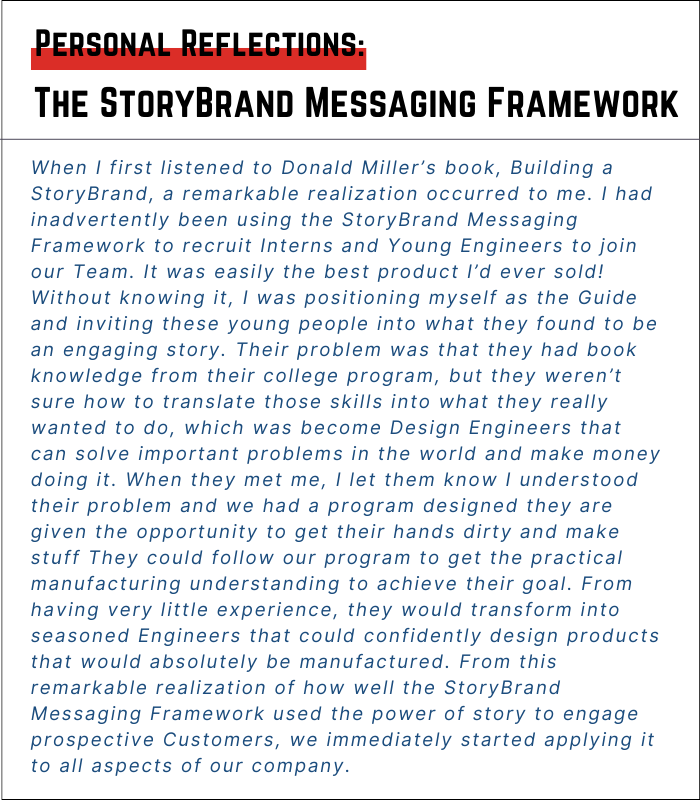
MyStoryBrand.Com BrandScript Tool
The elements of story from the StoryBrand Messaging Framework are organized and clarified through the use of a BrandScript. For your company, it’s important that you clearly define each element of the BrandScript so you’ll have the base elements of all your marketing communications established.
Here are the specific elements included:
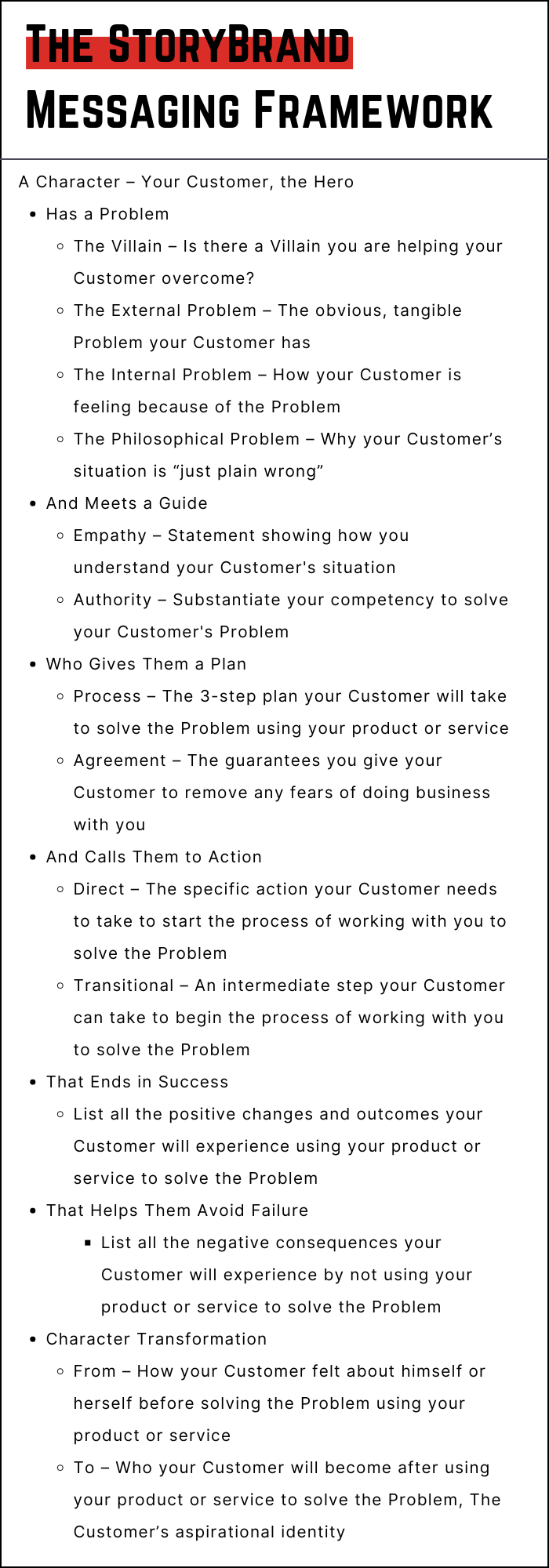
MyStoryBrand.com is a free platform where you can fill in your BrandScript with prompts and videos available to help you with the process.
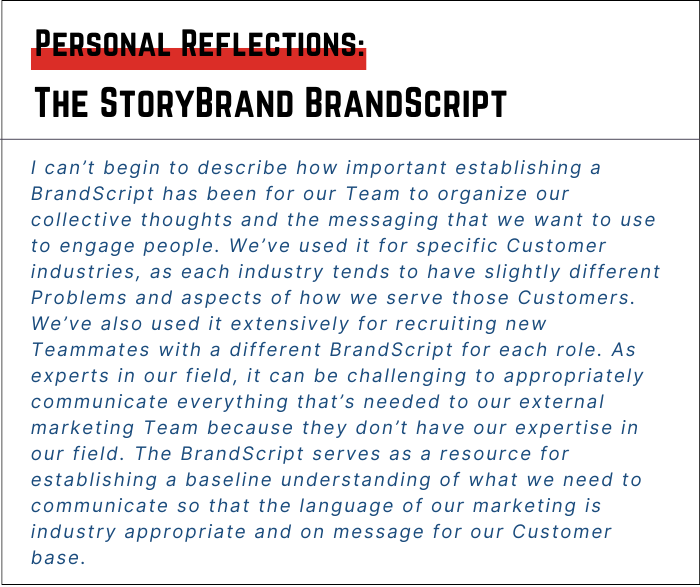
You’ll be amazed how transformative it can be for your Team when you complete a BrandScript together using the MyStoryBrand.com BrandScript tool. Your marketing messaging will be clear and concise as you invite your Customers into an engaging story where you help them to solve their Problem through your product or service.
Marketing Made Simple Framework
Once you’ve completed your BrandScript through all you learned from the StoryBrand Messaging Framework, the next question is easy, “What do I do with it?!?”
The Marketing Made Simple Framework takes you through the process of creating a Sales Funnel for your business. Building your Sales Funnel will help you guide your Customers through the following normal phases of a relationship:
- Curiosity – They think you may have something that will help them survive or thrive.
- Enlightenment – They will want to learn more about how you can help them.
- Commitment – They agree to let you know them by buying your product or service.
Customers will not commit until they’ve gone through the stages of being curious and getting enlightened. Your marketing can’t jump over either of the first two steps. The job of your marketing is to guide potential Customers in an exercise of memorization. You’ll communicate so clearly about the Problem you solve that they will be able to repeat your message. You want them to associate your company with the Problem that you solve so when they experience that Problem, your company is the first name that pops into their mind.
The Sales Funnel you will build contains the following components:
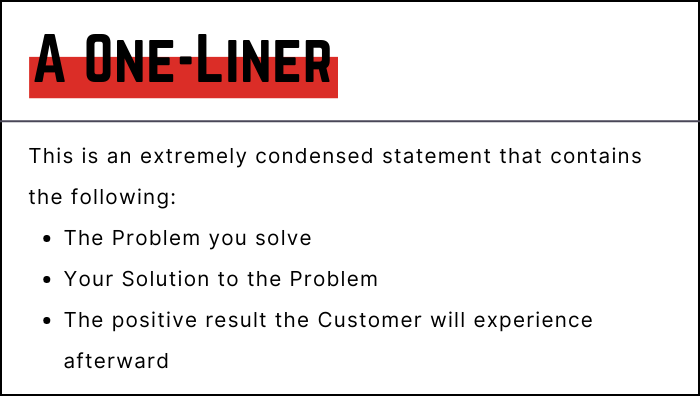
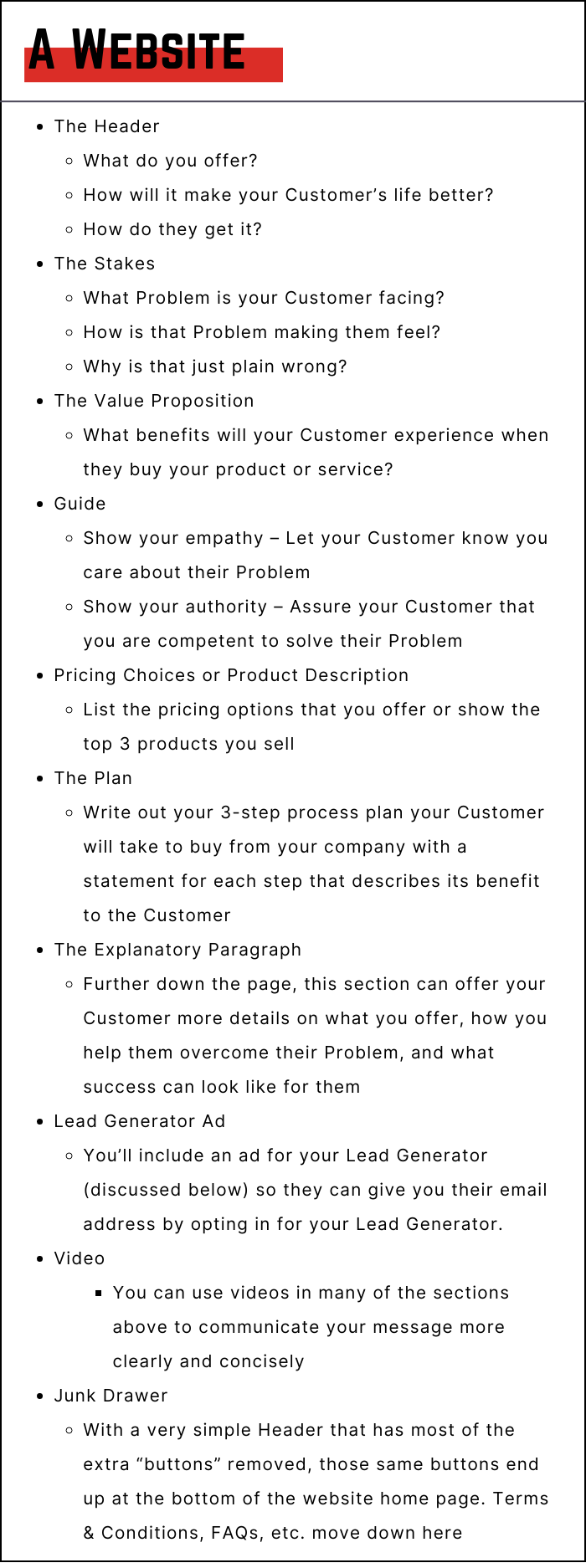
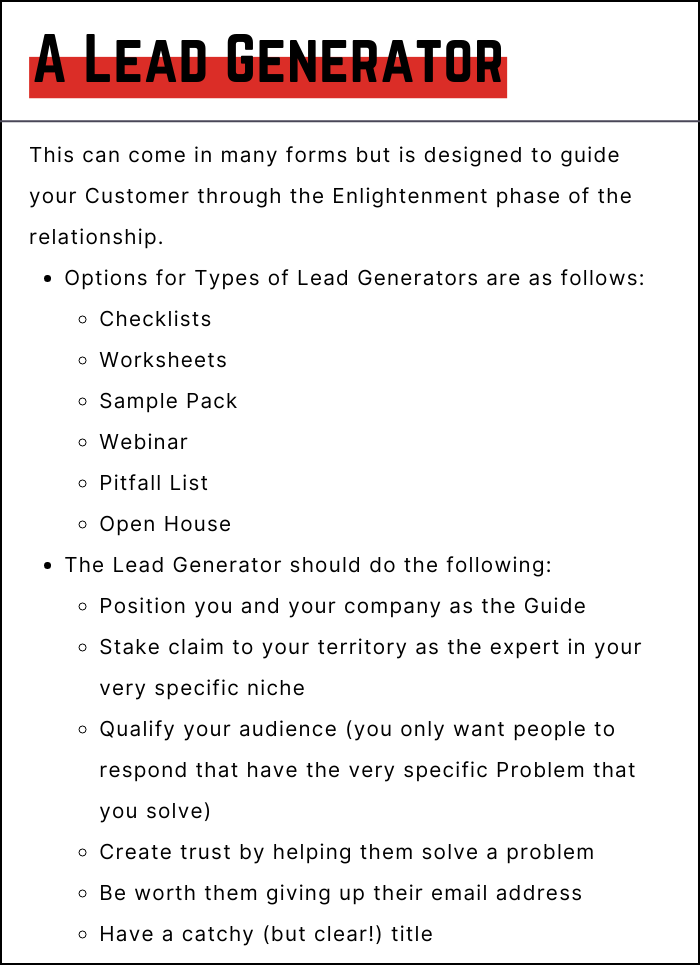
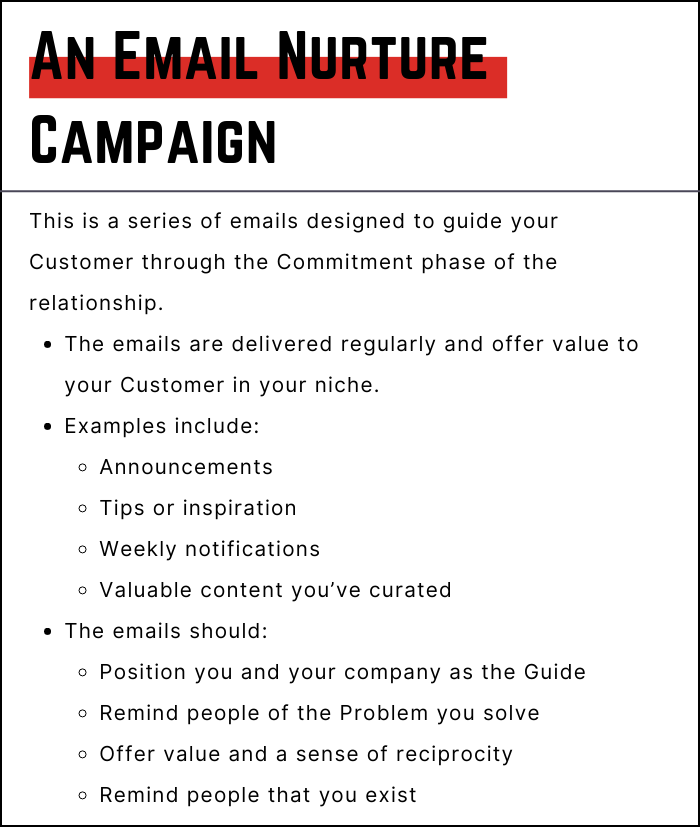
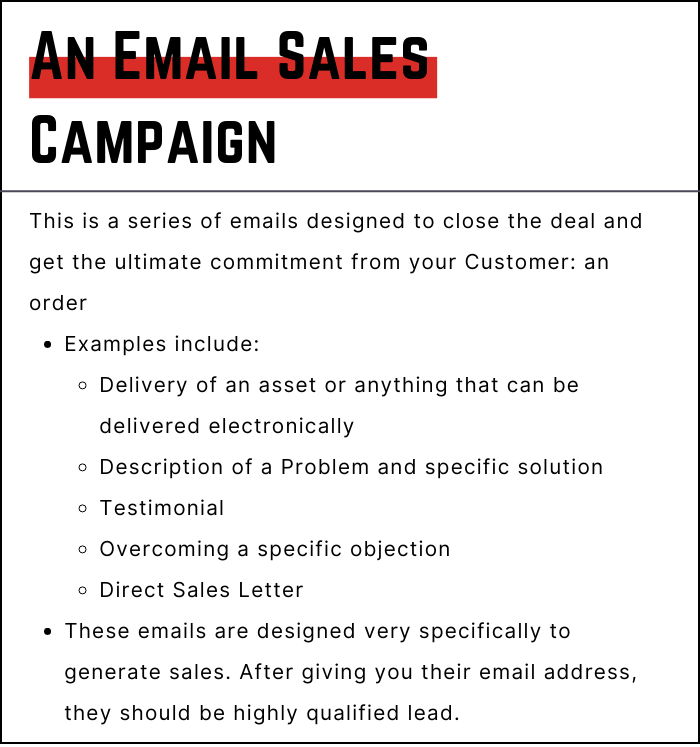
There is a lot that goes into a Sales Funnel but using the Marketing Made Simple Framework will help you build a marketing program that will clearly take your prospective Customers through the natural phases of a relationship until they buy from you so you can help them solve their Problem.
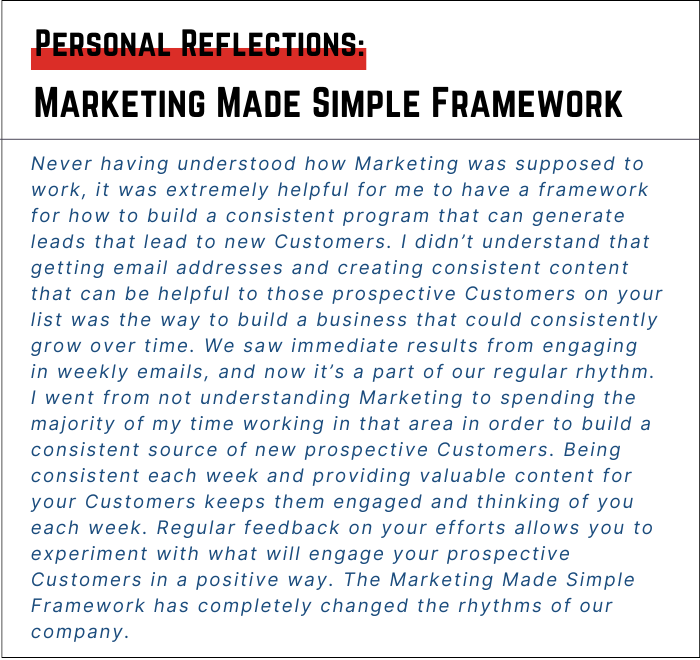
You’ll be amazed how often you engage in low-level negotiations, once you have the tools to recognize them. Those situations can be costly if you don’t clearly understand the tactics and strategies. The Negotiation Made Simple framework will increase your awareness and provide the tools and skills needed to effectively negotiate each day. From discussions with your Team, to big opportunities with your Customers, you’ll be better prepared to achieve the outcomes you desire.
Final Thoughts
Final Thoughts
The second step from Donald Miller’s book, How to Grow Your Small Business, is the Right Engine – Your Marketing. Using the StoryBrand Messaging Framework will give you the words you need to invite your prospective Customers into a compelling story where they are the Hero and you are their Guide as they seek to solve the Problem they are facing. You’ll complete a Brandscript that contains the clear wording of the story and use the Marketing Made Simple Framework to build a Sales Funnel that drives sales. It requires a lot of work and plenty of experimentation, but you can have people seeking you out as the word gets out that you are the go-to resource to solve the particular Problem you’ve identified.
Completing Step 2 of Growing Your Small Business will position your company as a problem-solver for your Customers, inviting more of them into a compelling story so that your “plane” will have a powerful Marketing engine so it can fly far and fast.
